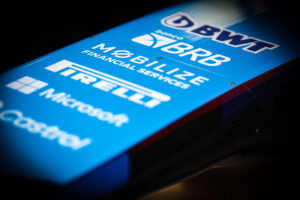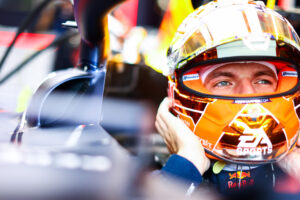A thrilling IMSA season came to a close at Michelin Road Atlanta on Saturday with the 25th running of Petit Le Mans.
At the end of 10 hours of racing, Tom Blomqvist, Oliver Jarvis, and Helio Castroneves came out victorious and the #60 Meyer Shank Acura was crowned the final DPi class champion.
1. GTD came to play
Throughout most of the 2022 season, GTD has played second fiddle to GTD Pro when it comes to on-track performance. Despite the fact that they race equal spec machinery, GTD has more often than not performed a little worse than the Pro categories, mainly because of their Pro-Am driver structure.
GTD requires at least one Bronze or Silver driver to qualify the car while GTD Pro teams are allowed to use any mix of driver ratings and typically more experienced professional drivers. The experience has typically paid off for the GTD Pro class as a whole but at Petit Le Mans the GTD teams came to play.
The #1 Paul Miller Racing BMW got things rolling on Friday by qualifying top of the GTD class but third in GT overall, and just a few tenths away from the overall GT pole. In the race, the difference was even greater with five GTD cars finishing ahead of the highest finishing GTD Pro car. Either way, the racing throughout the GT field was suburb although the race left us on the edge of our seats on many occasions.
2. Tom Blomqvist and Filipe Albuquerque are so much fun to watch
Racing knows how to build rivalries, whether its Verstappen and Hamilton, Prost and Senna, or Earnhardt and Bodine, watching two drivers fight tooth and nail for position is the bread and butter of racing. While Blomqvist and Albuquerque isn’t the most heated and aggressive rivalry in the world, all throughout the season those two have been at each other’s throats from the moment the green flag flies each and every race.
Both drivers have been in equal machinery all season, so it’s been purely down to driving ability when they get next to each other on track. Watching the bright pink #60 and the dark blue #10 bob and weave through GT traffic in the waning minutes of a race for the win has been a treat all season and their battle at Petit Le Mans was no different.
With half an hour to run and it all on the line, Blomqvist held Albuquerque back with his clever use of traffic and pure speed. But Albuquerque was right on his tail the whole time, weaving through traffic and giving it everything he had for the win.
3. The future is bright
The 2022 Petit Le Mans grid featured some spectacular young talent making moves on drivers more than twice their age like it was nothing. In the #81 DragonSpeed LMP2 car Juan Pablo Montoya was joined by his 17-year-old son Sebastian Montoya who raced just as aggressively and confidently as his father and almost lead the team to a class victory with the poise of a much more experienced racer.
Also in LMP2 was 16-year-old Josh Pierson helping pilot the #11 PR1 Mathisen machine. Pierson is a surprisingly experienced sports car driver despite his age, having raced with United Autosport in Le Mans this year and becoming the youngest driver to ever race in the 24 Hours.
17-year-old Indy Lights driver Kyffin Simpson also saw some success with a class win with Gradient Racing in GTD with the #66 machine. Alongside a handful of other drivers in their late teens and early 20s that took the grid at Petit Le Mans, the grid was very diverse in age but spells very good things for the future of the series nonetheless.
4. IndyCar and IMSA should schedule around each other
A lot of IMSA teams keep IndyCar drivers on the payroll for endurance races when a car needs more than two drivers on the roster. Races like the Daytona 24 and Petit Le Mans tend to draw those drivers more easily because they fall on either end of the IndyCar season.
In Petit Le Mans on Saturday we had Scott Dixon, Jimmie Johnson, Kyle Kirkwood, Cristian Rasmussen, Kyffin Simpson and Helio Castroneves in terms of current IndyCar/Indy Lights drivers competing. All those drivers had daily decent performances, and I’m sure brought some eyes to the race just by them being there.
It is a good thing for North American motorsport as a whole to have that kind of crossover between drivers in different series, and IMSA and IndyCar should recognize that and take proper advantage of it. That may come in the form of freeing up just the endurance rounds for the drivers, but ideally, most if not all rounds should run without conflict and allow IndyCar drivers the option to run full time in both series.
5. The DPi Machines will be sorely missed
Petit Le Mans marked the final race of the DPi category as it is set to be replaced by the GTP Hypercars in 2023. This ending is bittersweet because while new technology and evolution is always welcome in motorsport, those DPi cars were an absolute beauty to watch.
Watching those cars seamlessly slice through lapped traffic and not blink an eye was a sight fans will never grow tired of and Saturday’s race was a perfect example of that. All throughout the race, the DPi machines were tearing through traffic at insane speeds with perfect set-ups for the conditions.
It will take some time to get used to a new type of car at the top of IMSA next season and beyond, but we just hope those cars handle and move as well as the DPi cars did week in and week out.






